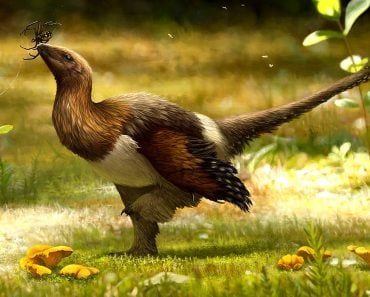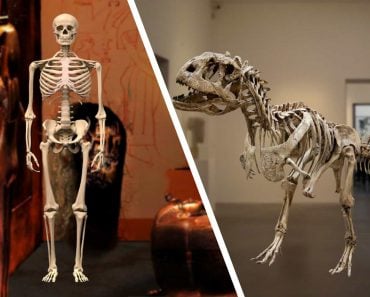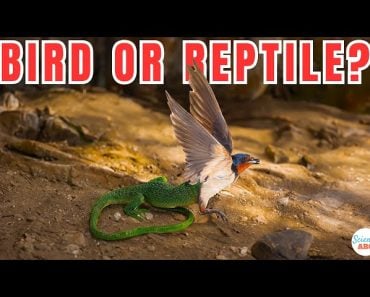Scientists determine dinosaur colors by analyzing melanosomes present in discovered fossils. Some dinosaurs were found with black feathers, while others had a rusty red color.
How we see dinosaurs has changed drastically since Hollywood made them superstars. They started as brown, green, or pale white lizard giants with rough, scaly skin roaring in the rain. We now know that many dinosaurs at the end of the Cretaceous, like Anchiornis huxleyi and velociraptor, actually had feathers!
We have come to associate the Tyrannosaurus Rex with a dark brown hue and Brachiosaurs with a gentle green-grey, but are those assumptions correct? 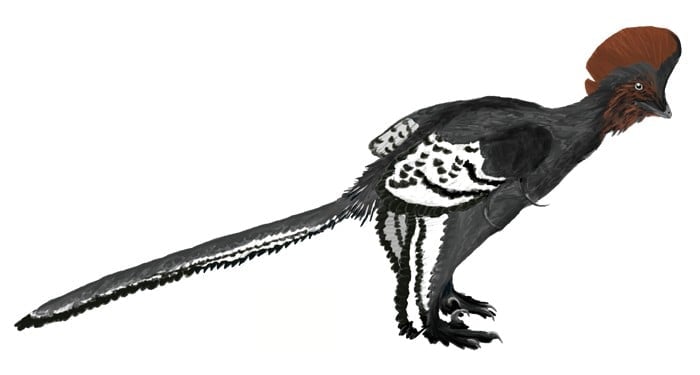
An artist’s representation of Anchiornis huxleyi, is based on research revealing that it had feather colorations. (Photo Credit : Hein Nouwens/Shutterstock)
Recommended Video for you:
What Was The First Concrete Evidence For Dinosaur Colors?
Paleoartists like Robert Nicholls must constantly keep up with new research to represent dinosaurs accurately. This is achievable for body structure and skin texture, as skeletal remains and fossilized skin imprints give enough good information to render these animals. However, one thing fossils can’t always tell us about is the color of these creatures.
For fossils to indicate color, there must be organic matter (fossils are calcium remnants of bones). Until recently, paleontologists hadn’t found any pigments on any of the fossils, but as it turns out, they were looking in the wrong place!
In 2006, Jacob Vinthers, a paleontologist at the University of Bristol, peered at squid ink from a fossilized squid and was, as the scientist himself put it, riveted. Vinthers was looking at small blobs resembling melanosomes. Excited by the possibility of melanosomes surviving in fossils, he and his team analyzed a feather from the Cretaceous period. Subsequently, they named their published findings “The Colour of Fossil Feathers.”
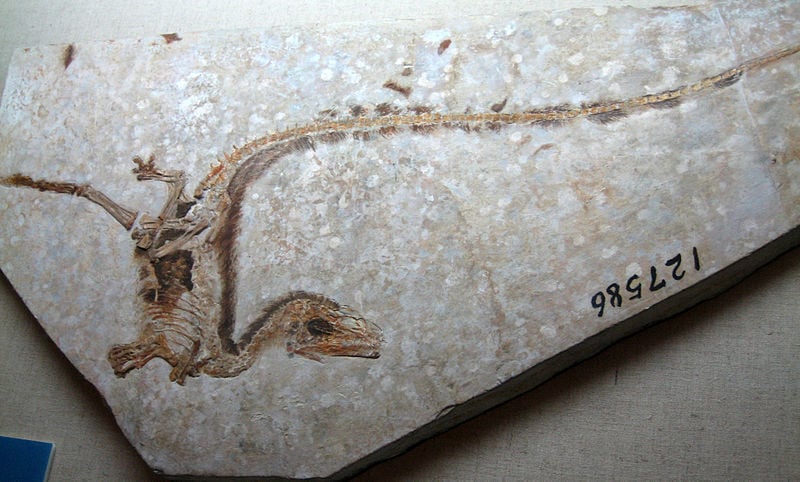
What Are Melanosomes?
Melanosomes are blobs in your skin that contain the pigment melanin. Most brown, black, red, and orange animals have melanosomes. Browns and black are due to eumelanin-containing melanosomes, while reds and oranges come from pheomelanin.
Also Read: Why Is The Color “Blue” Difficult To Find In Nature?
Melanosomes In The Feathers Of Dinosaurs
Until the 2008 paper on melanosomes, scientists thought the melanosome blobs were a layer of feather-decomposing bacteria. But, as Vinther and his team point out from their sample fossil, these small blobs were present in a specific pattern that wouldn’t be there if it was a bacterial biofilm, which would colonize indiscriminately.
Now, you can infer the color of dinosaurs from the shape of the melanosomes. As Vinther says in an interview with NPR, “If you have a black melanosome, they’re shaped like a sausage, whereas if you have a red melanosome, then they’re shaped like a little meatball.”
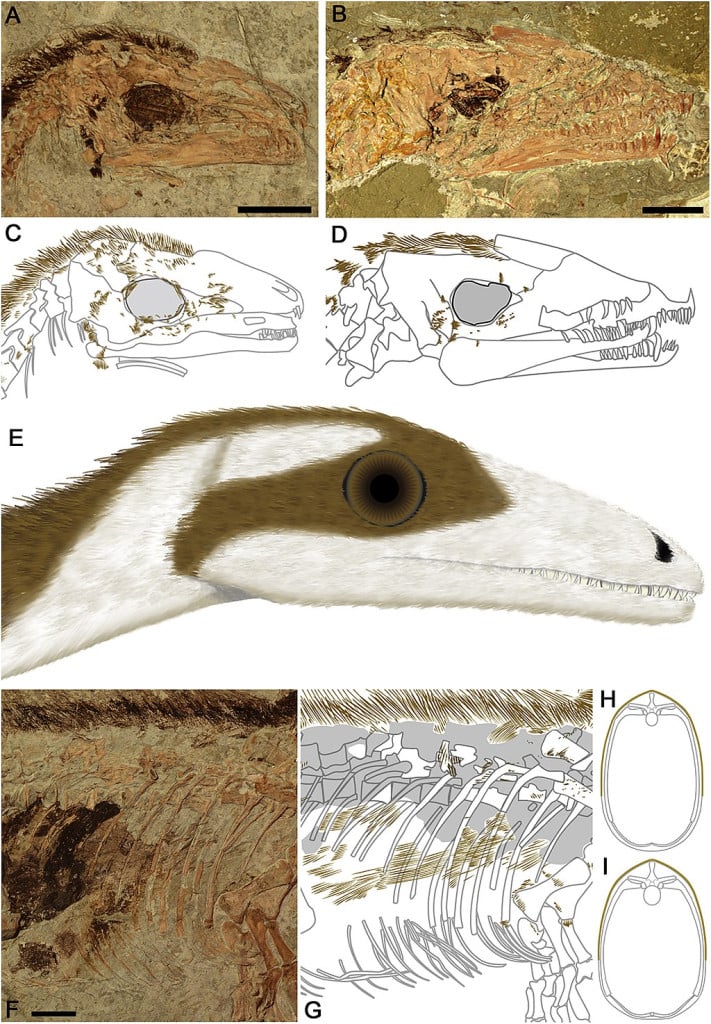
This patterning is consistent across time and species. The black melanosomes in my hair will have the same sausage shape as a dinosaur (or bird) with black feathers.
Studying their patterning and arrangement with sophisticated technologies like scanning electron microscopes can let a scientist look into the hidden world of dinosaur colors.
Melanosomes aren’t the only way to determine color, as other colors can come from an animal’s diet, like the pink from flamingos. These pigments degrade with time and rarely leave traces (or we have yet to find them)
Examples Of The Dinosaur Colors Found
Anchiornis And Sinosauropteryx
In 2010, two papers were published a week apart describing the color patterns of two theropods, Anchiornis and Sinosauropteryx.
Anchiornis huxleyi displayed vibrant red feathers around its head and black-and-white patterning on its wings. Sinosauropteryx was shown to have a brilliant chestnut hue with alternating red-to-white stripes on its tail.
Microraptor
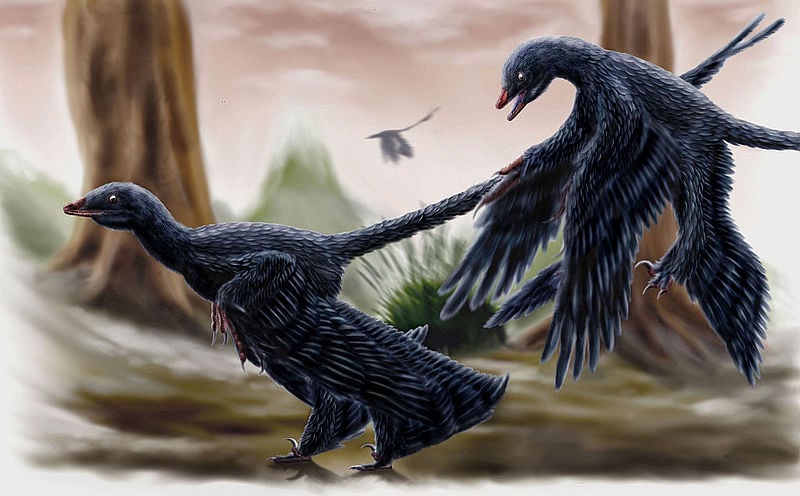
Soon enough, more dinosaurs were labeled with their actual colors. Microraptor, a small, winged dinosaur that lived about 120 million years ago, was discovered to have an iridescent black plumage similar to ravens today.
Psittacosaurus And Borealopelta
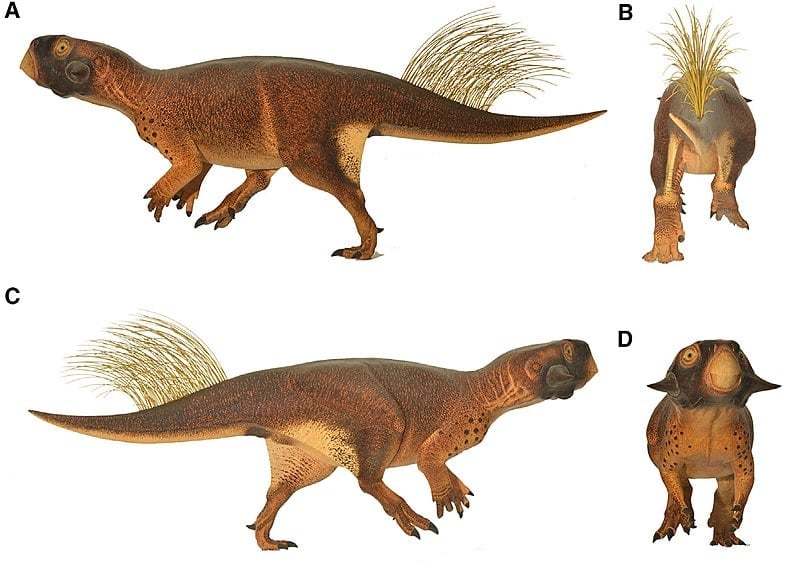
Psittacosaurus, a large dinosaur with horns on its head, is likely a rust-red color with a darker back and a lighter belly.
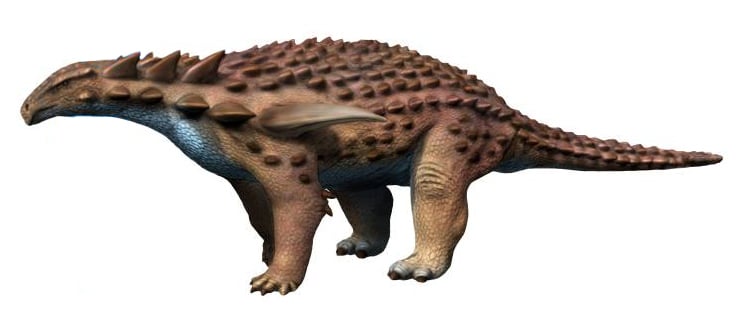
Another megaherbivore dinosaur is Borealopelta. From an exceptionally well-preserved fossil, we know the dinosaur was red-brown, darker on top, and lighter on the bottom.
This countershading in both Psittacosaurus and Borealopelta could be a camouflage against predators.
Also Read: What Is A Dilophosaurus?
Why Should We Care About The Color Of Dinosaurs?
Determining if dinosaurs had feathers or what color they were can tell scientists a lot about what lives they might have lived. A dull coloration might mean that the dinosaur preferred not to be seen.
If there is evidence that a dinosaur was vibrantly colored, why was it so? Was it for sexual selection?
Looking at color also helps us look at evolutionary links with the modern successors of dinosaurs: birds. It’s easy to think that all reptiles are related to dinosaurs, but that would be a misconception. Evidence shows that modern birds are closer relatives of dinosaurs than modern reptiles, something that genetic and fossil research into dinosaurs and their appearance has helped to establish.
Also Read: Why Aren’t Most Birds Very Colorful?
We’re far from knowing whether the Tyrannosaurus Rex was a vibrant shade of pink, as guessing skin color from fossilized remains is currently clever guesswork. This doesn’t mean there aren’t any clues, but getting a completely accurate picture of what dinosaurs looked like might only be possible with time travel. Until that becomes available, researchers and experts will keep digging into the past and trying to crack these ancient secrets!
References (click to expand)
- Zhang, F., Kearns, S. L., Orr, P. J., Benton, M. J., Zhou, Z., Johnson, D., … Wang, X. (2010, January 27). Fossilized melanosomes and the colour of Cretaceous dinosaurs and birds. Nature. Springer Science and Business Media LLC.
- Li, Q., Gao, K.-Q., Vinther, J., Shawkey, M. D., Clarke, J. A., D’Alba, L., … Prum, R. O. (2010, March 12). Plumage Color Patterns of an Extinct Dinosaur. Science. American Association for the Advancement of Science (AAAS).
- Vinther, J. (2017, February 14). The True Colors of Dinosaurs. Scientific American. Springer Science and Business Media LLC.
- Brown, C. M., Henderson, D. M., Vinther, J., Fletcher, I., Sistiaga, A., Herrera, J., & Summons, R. E. (2017, August). An Exceptionally Preserved Three-Dimensional Armored Dinosaur Reveals Insights into Coloration and Cretaceous Predator-Prey Dynamics. Current Biology. Elsevier BV.
- Lingham-Soliar, T. (2010, December 3). The evolution of the feather: Sinosauropteryx, a colourful tail. Journal of Ornithology. Springer Science and Business Media LLC.
- Brown, C. M., Henderson, D. M., Vinther, J., Fletcher, I., Sistiaga, A., Herrera, J., & Summons, R. E. (2017, August). An Exceptionally Preserved Three-Dimensional Armored Dinosaur Reveals Insights into Coloration and Cretaceous Predator-Prey Dynamics. Current Biology. Elsevier BV.




